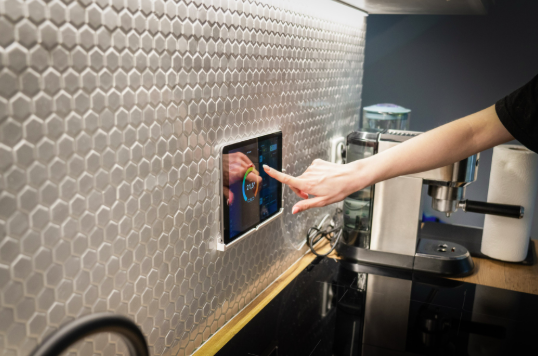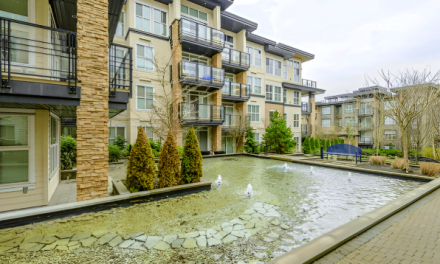Across Canada, homes are getting smarter—equipped with voice-controlled lighting, intelligent thermostats, and security systems that stream live footage to your phone. As extreme weather patterns intensify and energy prices fluctuate, Canadians are turning to smart home technologies for efficiency, safety, and convenience.
But do smart homes live up to the hype? Or are they simply another expensive trend?
This blog explores whether smart home investments make sense for Canadians. We’ll assess real-world benefits, costs, and long-term value, while linking it to recent Canadian developments—from security concerns near G7 summits to record-breaking heatwaves in Ottawa.
What Is a Smart Home?
A smart home integrates internet-connected devices to automate and enhance household tasks. These systems often include:
- Smart thermostats (like Ecobee or Nest)
- Voice-activated assistants (Google Assistant, Alexa)
- Smart lighting and appliances
- Security systems with cameras and motion sensors
- Energy monitoring tools
These devices can work independently or through a central hub, allowing homeowners to control systems remotely—via smartphone, voice, or scheduled automation.
Why Smart Homes Are Gaining Popularity in Canada
There are several factors driving smart home adoption across the country:
- Energy efficiency: With volatile utility prices, Canadians want ways to cut consumption and bills.
- Security concerns: From break-ins to national security alerts (like the recent fighter jets scrambled near the G7 summit), safety is on people’s minds.
- Climate extremes: The recent heatwave in Ottawa with humidex nearing 40 is just one example of how unpredictable Canadian weather can be—making temperature automation critical.
Energy Efficiency: Smart Thermostats Pay Off
For Canadians battling harsh winters and sweltering summers, heating and cooling account for a significant portion of household energy use.
Smart thermostats:
- Learn your schedule and adjust temperatures automatically
- Optimize heating and cooling for when you’re home or away
- Offer remote control, so you can turn off the heat from the office
Cost savings: Homeowners can save between 10%–15% on annual energy bills, depending on usage patterns and province.
With increasingly extreme weather events, like Ottawa’s record-breaking humidex reading of nearly 40°C, automated cooling can reduce costs while maintaining comfort.
Enhanced Home Security and Peace of Mind
Safety is a major motivator for smart home investments. Smart security features include:
- Doorbell cameras with facial recognition
- Remote door locks
- Motion-activated lights
- Intrusion alerts directly to your smartphone
These are especially useful when national security concerns arise—such as the recent G7 restricted airspace incident in Kananaskis—which raise public awareness of safety vulnerabilities.
Smart homes give Canadians peace of mind, especially when traveling or working long hours away from home.
Canadian Lifestyle Fit: Smart Homes for Busy Families
Smart homes don’t just make homes safer—they make them more convenient.
Smart appliances and hubs:
- Notify you when laundry or dishes are done
- Suggest grocery lists based on what’s in your fridge
- Let you check in on pets or kids remotely
These features are particularly useful for busy urban families, where managing time and energy is essential.
For remote workers, being able to control lighting, temperature, and music with a simple voice command enhances productivity and comfort.
Environmental Responsibility
Canadians are becoming more eco-conscious, and smart homes support this through:
- Automated lighting schedules to reduce energy waste
- Leak detectors that prevent water overuse
- Power monitoring for carbon footprint awareness
With national conversations focused on sustainability and resilience, smart homes align with both environmental and financial goals.
Upfront Costs: What Should You Expect?
Smart home systems require an upfront investment, but they vary based on complexity:
| Feature | Cost Range |
| Smart Thermostat | $250–$350 |
| Smart Bulbs | $20–$60 per bulb |
| Smart Locks | $150–$300 |
| Security Systems | $300–$1,500 |
| Voice Assistants | $50–$150 |
| Smart Appliances | $1,000+ |
Is it worth it? In many cases, yes—especially if you plan to stay in your home long-term. Some devices, like smart thermostats and lighting, can pay for themselves in under two years.
Also, smart upgrades add resale value and may qualify for home insurance discounts or government rebates.
Government Incentives Across Canada
Some Canadian provinces offer rebates for energy-efficient smart devices:
- Ontario’s Save on Energy: Periodic thermostat rebate programs
- BC Hydro & FortisBC: Incentives for energy-saving appliances
- Federal programs: Often promote energy-efficient retrofits
Always check local utility providers for updates on rebate eligibility.
Potential Drawbacks and Considerations
While smart homes offer many benefits, they’re not for everyone. Here are a few cons to consider:
- Privacy and data concerns: Smart devices can be hacked if not secured properly.
- Internet dependency: No Wi-Fi, no control.
- Tech complexity: Some users—especially older adults—may struggle with setup and maintenance.
However, with proper installation, security updates, and user education, these issues can be minimized.
Final Verdict: Are Smart Homes Worth It?
Smart homes in Canada are more than just a trend—they’re a forward-thinking investment in efficiency, security, comfort, and sustainability.
Given Canada’s diverse weather extremes, growing environmental awareness, and rising cost of living, smart home technologies can help homeowners save money, stay safe, and reduce their carbon footprint.
Whether you’re reacting to increasing climate unpredictability, like Ottawa’s blistering humidex, or broader safety concerns as highlighted by the G7 airspace breach, a smart home setup can help you stay in control—no matter what comes your way.










